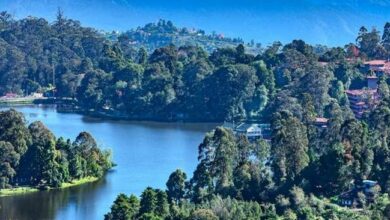Exploring Darjeeling: The Queen of the Himalayas

Darjeeling, often referred to as the “Queen of the Himalayas,” holds a special place in the hearts of global travelers. Nestled amidst the majestic Himalayan mountains in the northern part of West Bengal, this quaint town served as the summer capital during the colonial era. The name “Darjeeling” originates from the Tibetan words “Dorge,” meaning “thunderbolt,” and “Ling,” meaning “a place” or “land,” signifying its title as the “Land of Thunderbolt.”
Located at an altitude of 2042 meters (6700 feet) above sea level, Darjeeling boasts a pleasant climate year-round. Enriched with the cultural heritage of the North-Eastern states, the local populace predominantly speaks Nepalese while also being proficient in Hindi and English. Accessing Darjeeling is facilitated by either train or flight, with early booking recommended for smoother travel and better fares. Bagdogra Airport serves as the nearest air gateway, while New Jalpaiguri (NJP) acts as the nearest railway station. The city of Siliguri, located 16 km from the airport, serves as a transit hub.
Bagdogra Airport offers breathtaking aerial views of the Himalayas during the two-hour flight from Bengaluru. Upon arrival, a scenic 90 km journey by bus or cab from Bagdogra or New Jalpaiguri Railway station transports visitors to Darjeeling. Additionally, the iconic Darjeeling Himalayan Railway, recognized as a UNESCO World Heritage Site, offers a nostalgic journey on its century-old toy train.
The toy train journey, spanning 88 km from New Jalpaiguri to Darjeeling, showcases the region’s picturesque landscapes. Passengers can opt for a 7-hour trip from New Jalpaiguri or a shorter 2-hour round-trip from Darjeeling to Ghum, passing through tea gardens, valleys, and bustling streets.
Ghum Railway Station, situated at the highest altitude (2258 meters) in the country, hosts the Darjeeling Hill Railway museum, featuring vintage steam engines. The Batasia Loop, another notable stop, offers panoramic views of Mount Kanchenjunga and the Darjeeling town below, along with a memorial garden dedicated to Gurkha soldiers.
For an enchanting sunrise experience, visitors flock to Tiger Hill, where the first rays illuminate the snow-capped Himalayan peaks, including the twin peaks of Mount Kanchenjunga and, on clear days, even Mount Everest. Tibetan Buddhist monasteries, such as Ghoom Monastery and Bhutia Busty Monastery, provide cultural insights and vibrant artwork.
Darjeeling’s high-altitude tea gardens produce globally acclaimed tea brands, offering visitors the chance to sample and purchase high-quality tea. The local cuisine, featuring Nepali and Naga dishes, showcases a unique blend of flavors. To savor authentic Nepali and Naga cuisine, establishments like Hotel Kathmandu Kitchen and Kunga Restaurant offer diverse Thali varieties. The best times to visit Darjeeling are during the autumn months of October to December and the spring months of February to April, offering pleasant weather and breathtaking vistas. Whether exploring its heritage sites, savoring its cuisine, or witnessing its natural beauty, Darjeeling promises an unforgettable experience for travelers.






